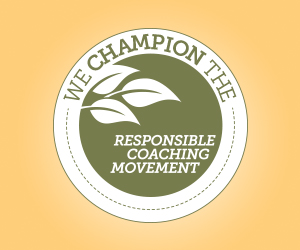
This is the second installment of a 3-part blog series providing tools and resources to strengthen safety and ethical values in sport by introducing the Responsible Coaching MovementOpens in a new window. In Blog #1, we focused on the importance of the Rule of Two. In this installment, we’ll turn our attention to another key area of the Responsible Coaching Movement – Background Screening. Be on the lookout for the last part of this series on Respect and Ethics Training.
“Sport should be free of discrimination, harassment, and harmful behaviour” is a message that was recently delivered by the federal government, which is introducing stronger measures to eliminate harassment and abuse in the Canadian sport systemOpens in a new window.

It is a statement that the Coaching Association of Canada, along with all of its partners, fully endorses. It is a statement that the Canadian sport community can support, in part, by adopting policies and processes to ensure the safety and protection of athletes and coaches through the Responsible Coaching Movement (RCM). We described in detail what the RCM was in Blog #1, but in short, it focuses on three key areas to support the positive development of safe sport:
- Rule of Two;
- Background Screening; and
- Respect and Ethics Training.
What is Background Screening?
Background screening is essential to making sport safe for all participants. The RCM defines background screening as a process that involves using a number of different tools to ensure coaches and volunteers meet the necessary security requirements to coach or work with athletes. These tools include comprehensive job postings, criminal record checks, interviews, and reference checks.
The background screening process should not only apply to coaches, but to all individuals working with athletes, including team managers, directors, and parents who accompany teams to competition.
Tools to Help Manage the Background Screening Process
With a better comprehension of what the entire background screening process entails, which involves much more than a criminal record check, let’s take a closer look at two tools to help administer it: 1) the RCM’s Background Screening Matrix and 2) Volunteer Canada’s 10-step screening process.
1. Background Screening Matrix
The Background Screening Matrix is an important resource of the Responsible Coaching Movement. Presented in a checklist format, it recommends different tools that should be considered as part of an organization’s screening process, including letters of reference, disclosure forms, and Sterling Talent Solutions’ Enhanced Police Record CheckOpens in a new window. Depending on the relative risk of the role an individual plays within an organization (e.g., from youth-volunteers to travel team coaches), the matrix proposes which screening tools should be utilized in the hiring process or as part of an ongoing assessment exercise. Below is a preview of the Background Screening Matrix.
2. Volunteer Canada’s 10 Steps of Screening
The 10 Steps of Screening is an ongoing process that ensures a volunteers’ involvement is meeting the needs of the organizations, the populations they serve, and the volunteers themselves. The steps provide clear guidelines for developing screening policies to show an organization’s commitment to safe and meaningful volunteer engagement. The 10 steps are:
- Assessment
- Position – Assignment
- Recruitment
- Application
- Interview
- References
- Police Checks
- Orientation and Training
- Support and Supervision
- Follow-up and Feedback
For a broader explanation of each step, DOWNLOAD THE BROCHURE HEREOpens in a new window.


